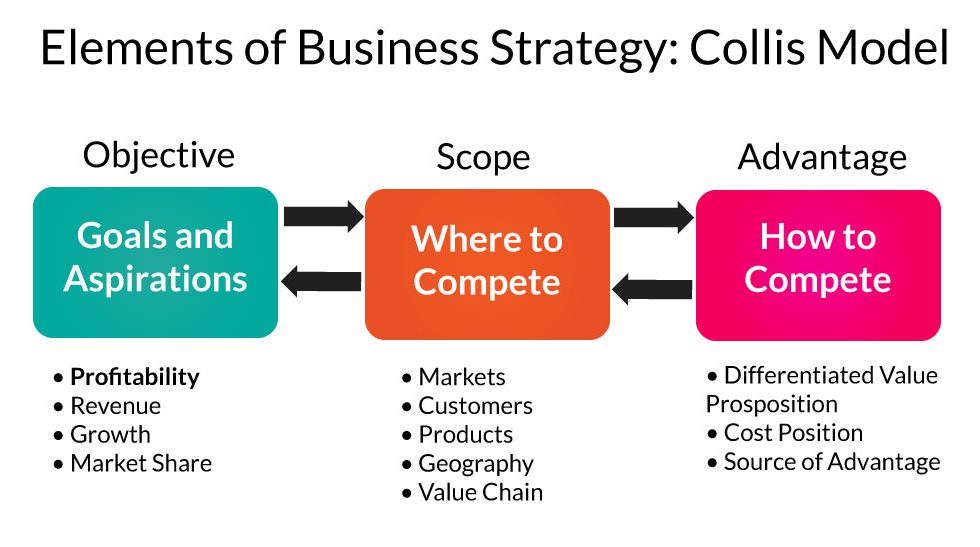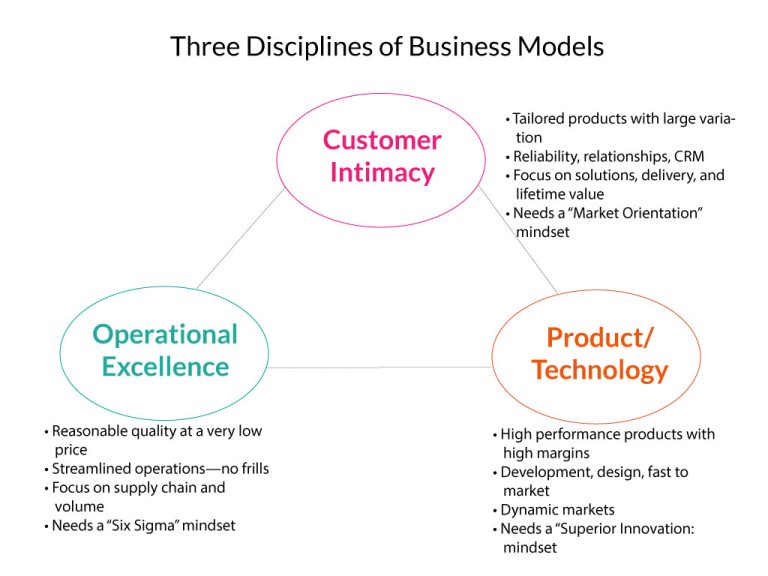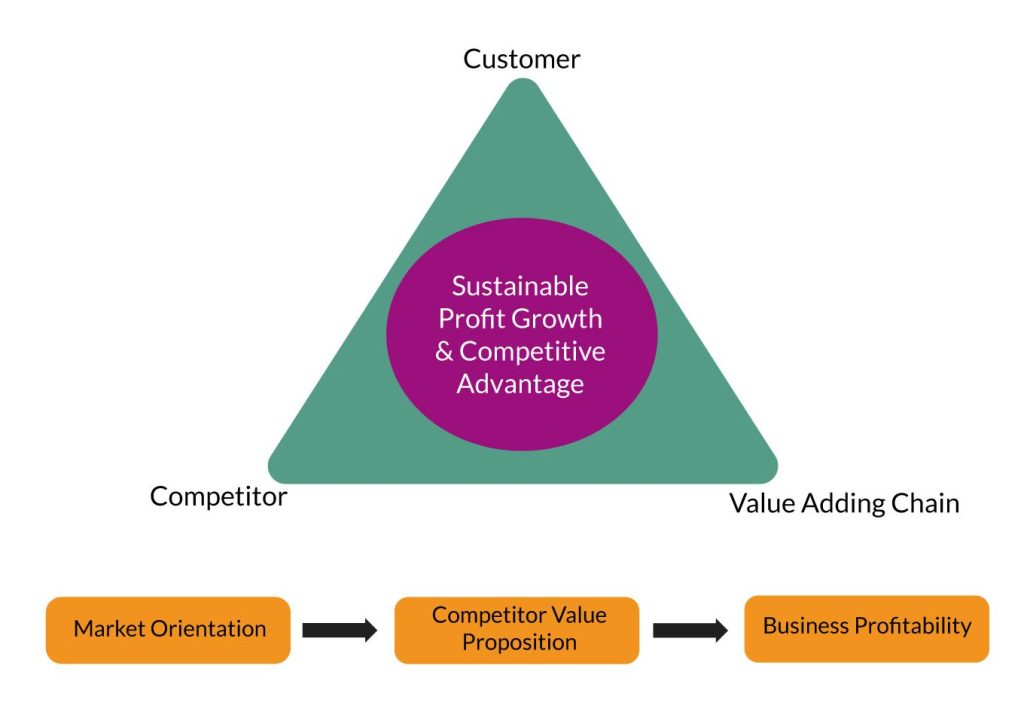Your Go-to-Market Strategy
Your go-to-market strategy is how your business will engage with a set of customers they want to serve in order to deliver growth and profits. It contains all of the work that a marketing unit must do to generate growth and profits.
An effective go-to-market strategy must be aligned with and driven by a well-articulated business strategy. The business strategy provides the basis and framework for the marketing strategy. Before you do a deep dive into marketing strategy, your business strategy has to be well-defined and understood throughout your organization.
To capture profits, businesses, and therefore their leaders, must
Internalize good business practices that
- Incorporate the work of marketing into all relevant business processes or business functions
- Ensure that the marketing strategy is aimed at realizing profits from the marketing work
Build organizational capacity and capability that align with the market demands
- Establish processes for innovation, marketing performance, and customer management
Use customer and market learnings to drive strategic decision making to
- Address human capital and information capital
- Create a climate for change
Elements of Business Strategy
Having clear objectives is critical for business strategy. The Collis Model[1] clarifies the work required to develop a business strategy. When you think about it, it’s fairly definitive. This model allows an organization, or even an individual, to only spend their time and effort only on what’s important—objective, scope, and advantage. It gets rid of the peripheral “nonsense” in which businesses get caught up and which causes them to lose both effectiveness and efficiency.

The objective should be specific, measurable, and time-bound.
The scope defines the boundaries of where to focus your resources.
The advantage is the power of an effective value proposition that has advantages over your competition.
Connecting the Strategy to the Work of the Organization

Mapping out the elements of your strategy and the framework for its execution is the ideal connection between the strategy and the work of the organization. It is the foundation of a strategy-focused organization where there are a few vital performance drivers. Everyone’s work is aligned with the critical success factors—the things that must be done in order to achieve an objective.
A Winning Business Model
The Disciplines of Operating/Business Models
A successful business strategy delivers its objectives. By definition, that means the revenue it generates must be profitable. Revenue, growth, and market share are irrelevant if your strategy does not achieve profitability. Businesses only thrive if they are profitable. A winning business model is one that delivers sustained profitability.
There are three disciplines of operating/business models.[2] You must clearly lead in one discipline and be competitive in the other two.

The company that focuses on operational excellence focuses on eliminating costs and keeping the product simple. The company that focuses on product/technology focuses on the product itself. The company that focuses on customer intimacy focuses on the customers’ experiences.
Let’s take, for example, three manufacturers of polymers: Dow, DuPont, and General Electric (GE). Dow is an operational excellence-focused company. Their message would be “Whatever you want, we have it cheaper.” DuPont is a product/technology-focused company. Their message would be “We have a better product than what you’re using now.” GE is a customer-focused company. Their message would be “However you want the product, we’ll make it work for you.”
Rules that Govern Marketing Leaders' Actions
There are a few rules that should govern marketing leaders’ actions:
Provide the best offering in the marketplace by excelling in a specific dimension of value.
This requires a value proposition that is compelling and unmatched.
Maintain threshold standards in the other value dimensions.
You can't let performance in other areas slip to the point that it impairs the attractiveness of your unmatched value.
Dominate your market by improving the value delivered year after year.
No company can be the best at everything, so focus on one area in which you can excel.
Build a well-tuned operating model dedicated to improving your value in the eyes of your customers.
Improving value is the market leader's imperative.
Elements of Business Model Development
There are four key elements of business model development—four pieces of the puzzle, if you will.[3] These pieces must be configured in a way that links them to the systems of the organization in order to deliver what the selected customers value and will buy.

1. Customer selection and value proposition
- To which customers can I deliver real value?
- Which customers will allow me to profit?
- Which customers do I not want to serve?
2. Value capture/profit model
- How do I capture, as profit, the value I created for customers?
- What is my profit model?
3. Differentiation—strategic control
- Why do my chosen customers buy from me?
- What makes my value proposition unique or differentiated compared to competitors'?
- What strategic control points can counterbalance customer or competitor power?
4. Scope
- What products, services, and solutions do I want to sell?
- Which activities or functions do I want to perform in-house?
- Which activities or functions do I want to subcontract, outsource, or work with a business partner to provide?
In the center of the puzzle are the organizational systems. When thinking about the organizational systems, you need to ask yourself the following questions:
- How will my organization deliver value while earning a profit?
- Do I have the necessary skills, systems, resources, etc.?
- Process capability
- People capability
- Organizational capability
- Information management capability
- How will I assess whether or not I am winning?
- What is my managing process?
- What’s in my dashboard?
Asset Orientation vs. Market Orientation
A market-oriented business thinks and acts differently than its precursor, the asset-oriented business. A business with an asset, or product, orientation starts with the factory and focuses on the products. The means are selling and promoting, with the end result profit being measured through sales volumes. By contrast, a business with a market, or customer, orientation starts with the target market and focuses on the end users’ needs. They achieve profits through customer specification, via integrated value delivery.

Looking at the downstream customer to uncover new value means certain shifts have already taken place—such as shifting from an asset-driven mindset to a market-driven mindset. This doesn’t mean you shuttered all production. Rather, it means that product development is based on intelligence from the market. Sometimes, the best opportunity to increase product value requires a new business model—a new way to go to market and possibly target a new set of customers.
A business that is driven by its assets generally views itself as having a strong product and/or cost position. Thus, they generally sell to direct customers. All value is delivered to and captured from those customers. They expect their direct customers to deliver value downstream. The asset-oriented business wins when they have a leadership position in their product manufacturing. Customers buy from the business because of product performance, costs, and supply continuity.
The market-oriented business increases product value and profit through their ability to differentiate down the value adding chain. They generally increase value because of the unique performance they provide the downstream market. If they are customer intimate, then they provide an experience to the downstream buyer that is uniquely associated with them.
A company with either mindset orientation captures value in the form of price premiums paid by the direct customer, because the downstream market demands the performance or experience delivered by the market-oriented supplier. Their value proposition is aimed at the downstream market. It is in this situation that ingredient branding is sometimes included in the value delivered.
Sustainable Profit Growth
The objective of market orientation is sustainable profit growth. The market is made up of the customer, the competitor, and the value-adding chain. You need to take all three into consideration in your analysis.

Customer
Understand the values and drives of the decision-making customer, as well as those customers whose values match your value proposition.
Competitor
Understand the short-term strengths and weaknesses and long-term capability and strategy of key current—and future potential—competitors, including the entire set of technologies capable of satisfying the current (and future) needs of the target market.
Value-Adding Chain
Understand the dynamics of the entire value chain, including the potential and economic constraints at all levels of the channel.
The above graphic is also the front end of Future Business History℠. Future Business History is part of a process designed to lead a business through developing a vision and aggressive growth strategy.
The process to make strategic product and marketing decisions starts with your internal vision and adds insights into what markets will value to grow your business. You need to characterize customers’ behavioral and emotional responses to products, services, and individuals. In doing so, you, as marketers, receive the information you need to generate compelling benefits, value propositions, and positionings that go beyond functional appeals. As a result, communications and offering design are more targeted and impactful, because they address the unique triggers necessary to establish preferences and the desired customer behaviors.
Building a Value Proposition
A value proposition is “the compelling promise, with the desired set of product deliverables and experiences, that an offering provides to a defined target audience that outweighs its total perceived cost while being differentiated from available alternatives and supported by reasons to believe.”[4] For each marketplace in which you compete, you must choose, be driven by, and communicate a clear statement of
- The target customer segment(s) you will serve
- The key benefits the customer values and will pay for in each segment
A customer’s incentive to purchase is the value the customer perceives balanced by the total perceived ownership cost.
It follows that the primary elements of an asset-oriented business are focused on their asset advantages. So, their value proposition could be
“We will provide you with a product that meets your needs consistently and you can count on us for our quality, delivery services, responsiveness, and ability to supply all your needs.”
The market-oriented value proposition to the direct customer could be
“We provide a unique offering that enables better or more diversified solutions or experiences to the end user. We will work with you to continuously find better solutions over time and continue to bring superior end user performance or experiences over time. The end user builds trust in what you offer them, because they know that your brand is included in the value proposition.”
The differences in the value propositions are in the orientation their promise communicates, the proof points of capabilities that back it up, and how the customer value they deliver is measured by the direct and downstream customers.
Customer Value
Customer value is the sum of benefits received minus the cost incurred by the customer from the product and service you provide. The cost incurred by the customer is not just the product cost (price of the product), but also the effort cost (the effort the customer has to exert to do business with you). Different customers buy different kinds of value.
What Customers Say About Value
Value propositions should be written from a customer perspective. Market leaders choose to excel in delivering extraordinary levels of one particular value, and their customers recognize them for it.
The role of marketing is to get more people to buy more stuff, more often, for more money, and more efficiency than your competitors. Marketing leads the development of the strategy that translates customer or consumer needs, values, and behaviors into offerings that result in profitable growth, providing sustainable competitive advantage.

- Understand the marketplace strategies
- Develop marketing strategies
- Define the offering
- Position the offering—products and services
- Determine the marketing mix
- Develop marketing programs
- Provide marketing tools
- Manage marketing resources
- Understand and communicate competitive strategy
- Be accountable for share, penetration of end user markets, and growth of brand equity
What Your Business Needs to Address
There are a few things your business needs to address in order to come up with a successful value proposition.

Assess the Market
- What is the current situation (baseline)?
- How is our situation changing?
- What are the opportunities?
Segment and Target
- Which opportunities are worth pursuing? Which are not? How will we decide?
- Where will we focus our limited resources?
- How will we define "winning?"
Design the Market Mix
- How will we exploit the high priority opportunities?
- What is our plan? How will we win?
- What is the key work underpinning the plan?
- What are the key processes at which we must excel?
- Who are the right people to do the work?
- How will we win over time?
Create Customer Demand
- How do we communicate the strategy in a way that is actionable?
- What do we do to stay top of mind with our customers?
- How do we motivate our customers to choose us or stay with us?
Deliver and Capture Value
- Are we following the path?
- Are we being consistent in a the way we deliver value to our customers?
- Do we have the proper balance between the short- and long-term?
- Are we working effectively across teams, doing what we need to do and enabling others to do what they need to do?
Manage Performance
- What will we measure to determine whether we are "winning?"
- How are we doing?
- Are there any gaps in our performance? If so, what will we do to close them?
- Have the facts and/or assumptions about our situation changed?
- Is the strategy appropriate?
- How do we ensure our organizational team is prepared for the next step(s)?
Conclusion
Your go-to-market strategy is grounded in a well-defined business strategy. The business strategy provides a direct line of sight to actions necessary to deliver the marketplace demands. This line of sight enables you to define specific initiatives and tasks each business function must deliver for success.
Now you know how to build your go-to-market strategy. You have the concepts, their elements, and tools you need do to just that. The next step is to transform them into an action plan based on your organization’s competencies and strategies. That will produce your roadmap to market success.
[1]David Collis and Cynthia Montgomery, Corporate Strategy Model, A Resource-Based Approach
[2]Michael Treacy, The Disciplines of Market Leaders
[3]Adrian J. Slywotzsky and David J. Morrison, The Profit Zone 2002 Three Rivers Press NY, NY
[4]Mahon Sawhney, PhD, Kellogg School of Management

Ron Sullivan
Ron Sullivan is a Senior Partner at Breakthrough Marketing Technology, LLC.


